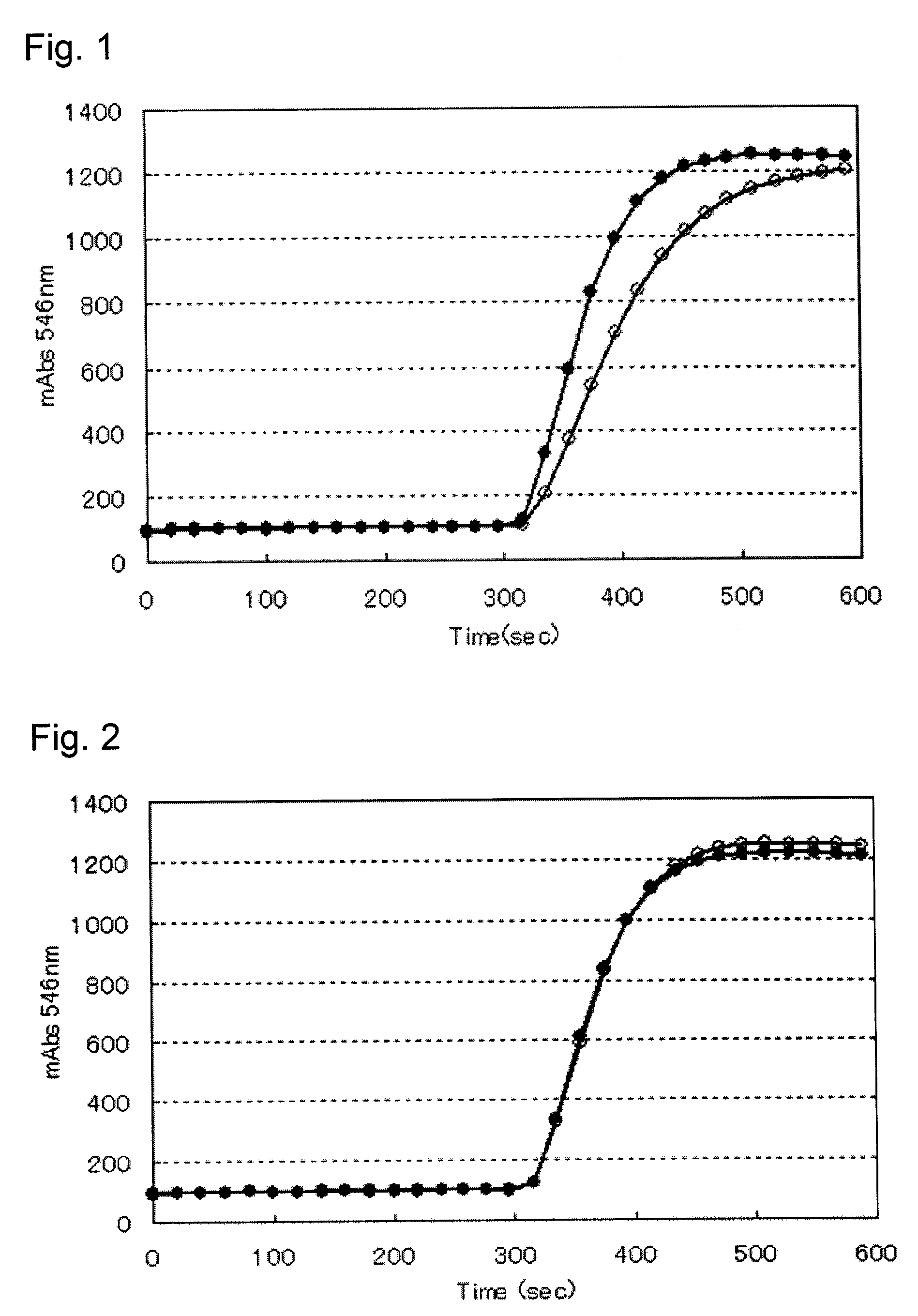Modified creatinine amide hydrolase having improved affinity for substrate, and reagent composition for determination of creatinine
- Summary
- Abstract
- Description
- Claims
- Application Information
AI Technical Summary
Benefits of technology
Problems solved by technology
Method used
Image
Examples
example 1
Preparation of Modified Creatinine Amide Hydrolase Gene
[0181]A chromosomal DNA of Pseudomonas putida PS-7 strain was prepared, and then an expression plasmid pCNH5-13 containing the creatinine amide hydrolase gene originated from that strain was prepared according to the methods described in Japanese Patent No. 2527035, and Biosci. Biotech. Biochem., 59, 7, p. 1331-1332 (1995).
[0182]The expression plasmid pCNH5-13 of a wild-type creatinine amide hydrolase is a plasmid obtained by inserting a structural gene encoding a creatinine amide hydrolase of Pseudomonas putida PS-7 strain origin into a multicloning site of vector pBluescript SK(−). The nucleotide sequence is represented by SEQ ID No. 2 in Sequence Listing, and the amino acid sequence of the creatinine amide hydrolase deduced from the nucleotide sequence is represented by SEQ ID No. 1 in Sequence Listing.
[0183]Then, mutagenesis was carried out by using PCNH5-13, a synthetic oligonucleotide of SEQ ID No. 3 shown in the Sequence ...
example 2
Preparation of Modified Creatinine Amide Hydrolase
[0192]Escherichia coli DH5α competent cells were transformed with each recombinant plasmid, pCNHM1, pCNHM2, pCNHM3, pCNHM4, pCNHM5, pCNHM6, pCNHM7, pCNHM8 or pCNHM9, to obtain the correspondent transformant.
[0193]Five ml of CNH-producing medium (1% polypeptone, 2% yeast extract, 1% sodium chloride, and 5 mM manganese chloride) was placed in a test tube and sterilized in an autoclave at 121° C. for 20 minutes. After cooling by standing, ampicillin separately sterilized by filtration was added thereto so that its concentration became 100 μl / ml. A single colony of Escherichia coli DH5α (pCNHM1) previously cultured in a LB agar medium containing 100 μl / ml ampicillin at 37° C. for 16 hours was inoculated thereinto, followed by culturing aerobically with stirring at 37° C. for 22 hours.
[0194]The microbial cells were collected by centrifugation, suspended in a 50 mM potassium phosphate buffer solution (pH 7.5), ruptured by ultrasonication a...
example 3
Evaluation of Modified Creatinine Amide Hydrolase 1
[0197]Each of the various creatinine amide hydrolases including the mutant creatinine amide hydrolases (CNHM1, CNHM2, CNHM3, CNHM4, CNHM5, CNHM6, CNHM7, CNHM8 and CNHM9) obtained in Example 2 and that obtained in Comparative Example 1 was added to a 50 mM potassium phosphate buffer solution (pH 7.5) so that the concentration became 1.67 U / mL, and the creatinine amide hydrolase activity was determined by the activity determination method an mentioned above. The results are summarized in Table 1. As seen from Table 1, it was confirmed that the modified creatinine amide hydrolases of the present invention have a Km value smaller as compared with that of the enzyme before modification.
[0198]In Examples 1 to 3, the activity of the creatinine amide hydrolase was determined in the following manner. As for the enzyme activity in the present invention, a unit (U) of the enzyme is defined as the amount of the enzyme required for generating 1 ...
PUM
| Property | Measurement | Unit |
|---|---|---|
| Length | aaaaa | aaaaa |
| Length | aaaaa | aaaaa |
| Length | aaaaa | aaaaa |
Abstract
Description
Claims
Application Information
 Login to View More
Login to View More - R&D
- Intellectual Property
- Life Sciences
- Materials
- Tech Scout
- Unparalleled Data Quality
- Higher Quality Content
- 60% Fewer Hallucinations
Browse by: Latest US Patents, China's latest patents, Technical Efficacy Thesaurus, Application Domain, Technology Topic, Popular Technical Reports.
© 2025 PatSnap. All rights reserved.Legal|Privacy policy|Modern Slavery Act Transparency Statement|Sitemap|About US| Contact US: help@patsnap.com

